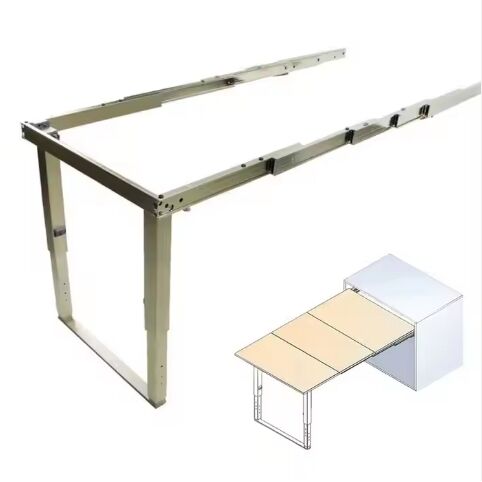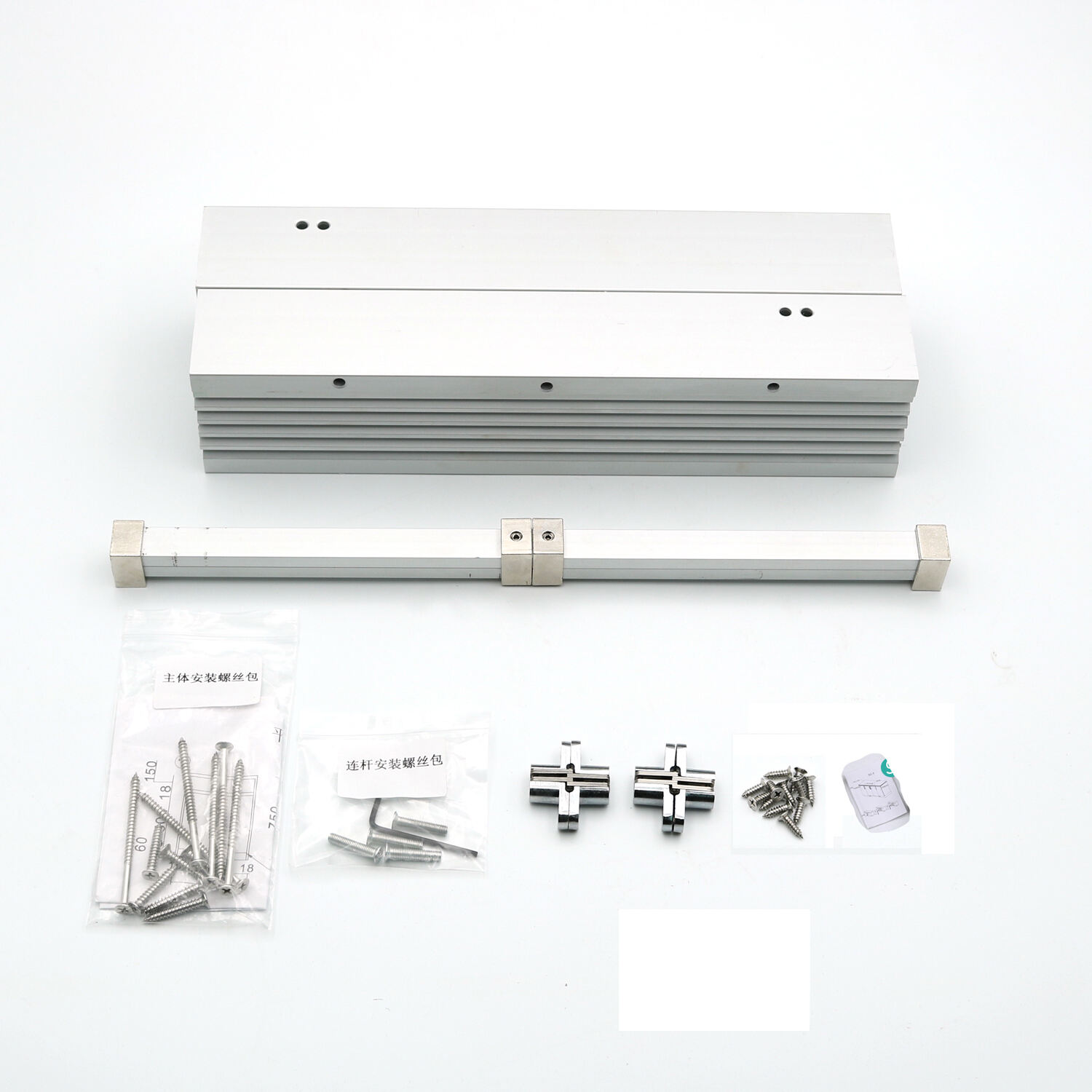پش ٹو اوپن سسٹمز کا نفاذ: ایک گائیڈ
دھکا دو اور کھولو نظام ایک نئی تعمیر ہے جو جدید ڈیزائنرز نے اس کی سہولت اور قیمتی قدر کی وجہ سے اپنایا ہے۔ سیویلوہارڈ ویئر، جو کسٹم ہارڈ ویئر حل اور ڈیزائنر ہے، وضاحت کرتا ہے کہ ایک سادہ چھونے یا دھکا دینے والے نظام کے ذریعے کابینٹس، درازیں اور یہاں تک کہ دروازے روایتی ہینڈل یا ناک بیرونی ہارڈ ویئر کے بغیر کیسے کام کر سکتے ہیں۔ مثال کے طور پر، فرنیچر صرف سادہ اور کم بھاری ہی نہیں ہوتا بلکہ یہ مسئلہ بھی ختم ہو جاتا ہے کہ ہینڈل کپڑوں میں الجھ جاتا ہے یا قیمتی اور محدود جگہ لے لیتا ہے۔ کمپیکٹ جگہوں کے لیے فرنیچر، جیسے چھوٹے مطبخ یا باتھ روم وینیٹیز، کو جگہ اور خوبصورتی کو بہتر بنانے کے لیے ترتیب دینا آسان ہوتا ہے۔ یہی اس نظام کی بنیادی قدر ہے۔ صارفین کی ضروریات اور دستیاب جگہ کے مطابق حل کو ہم آہنگ کرنے کے لیے اس کی اہمیت کو پہچاننا ناگزیر ہے۔

اِس صورت حال کے لِئے مناسب پُش-ٹو-اوپن سِسٹم کے اجزاء کا انتخاب کریں۔
مناسب اجزاء کا انتخاب پُش-ٹو-اوپن ہارڈ ویئر کو کامیابی کے ساتھ نافذ کرنے کا اولین مرحلہ ہے۔ سیولو ہارڈ ویئر پُش-ٹو-اوپن اجزاء کا ایک مفصل کیٹلاگ رکھتا ہے۔ اس میں سپرنگز، لیچز اور ڈیمپرز شامل ہیں۔ جن میں سے ہر ایک کا ایک مخصوص مقصد ہوتا ہے۔ مثال کے طور پر، ہلکے وزن والے کیبنٹس، یعنی بیڈ روم وارڈروب درازیں، بنیادی پُش-ٹو-اوپن سپرنگز کے ساتھ بہترین طور پر جڑ جاتے ہیں۔ یہ درازوں کو کھلنے کے لیے کافی دباؤ فراہم کرتے ہیں۔
”یہاں تک کہ کچن کے انبار اور بڑے کیبنٹس کے استعمال کے معاملات میں لیچز کو معاونت فراہم کرنے کے لیے مزبوط لیچز کی ضرورت ہوتی ہے، اور ہموار کیبنٹ کھولنے کے لیے لیچ ری باؤنڈ فورس میں اضافہ کیا جاتا ہے۔ اس کے علاوہ سیولو ہارڈ ویئر کے خصوصی ڈیمپرز کے ساتھ پُش-ٹو-اوپن کا استعمال بند کرتے وقت دھماکے کو کم کر دیتا ہے، جس سے فرنیچر کے مجموعی آرام اور دیمک میں اضافہ ہوتا ہے۔ فرنیچر کے وزن، سائز اور استعمال کی تعدد کے لحاظ سے اجزاء کا انتخاب کرنا نتائج حاصل کرنے کے لیے ضروری ہے۔"
پش تو اوپن سسٹمز کی مناسب انسٹالیشن صرف درست تیاری کے ساتھ ہی ممکن ہے جو از قبل کرنی ہوگی۔ یقینی بنائیں کہ پہلے درست آلات حاصل کر لیے جائیں جن میں شامل ہیں؛ برش ڈرلز، سکرو ڈرائیورز، ناپنے کی ٹیپیں، اور لیولز۔ سیولو ہارڈ ویئر معیار کے اعلیٰ درجے کے آلات استعمال کرنے کی تجویز دیتا ہے تاکہ فرنیچر اور اجزاء کے خراب ہونے کے خطرے کو کم کیا جا سکے۔ پیشگی جانچ بھی اہم ہوتی ہے: فرنیچر کو مستحکم اور لیول ہونا چاہیے، اگر البتہ کیبن کا باڈی اور ڈرائر فریم لیول نہ ہو تو اس کا منفی اثر سسٹم پر پڑ سکتا ہے۔ نیز، پش تو اوپن اجزاء کی انسٹالیشن صرف اسی صورت کی جاتی ہے اگر فرنیچر کی گہرائی اور چوڑائی درست ہو، ورنہ فرنیچر جام ہونے کا خدشہ ہوتا ہے۔ ایک سادہ مثال یہ ہے کہ ڈرائر کی گہرائی چالیس سینٹی میٹر ماپی گئی ہے، اس لیے اس سے زیادہ لمبائی تک جام ہونے والے پش تو اوپن لیچز کی ضرورت ہوگی۔ انسٹالیشن سے پہلے کی جانچ کرنے سے وقت اور وسائل دونوں کی بچت ہوگی کیونکہ سسٹم کے صحیح طریقے سے کام نہ کرنے کے امکانات کم ہو جاتے ہیں۔

پش تو اوپن سسٹمز کے لیے انسٹالیشن کا مراحلی طریقہ
سسٹم کو کھولنے کے لیے پش کے کامیاب استعمال اور انسٹالیشن کے لیے فراہم کردہ ہدایات کی مناسب اور تفصیلی پیروی ضروری ہے۔" Sevilohardware ہر قسم کی وائرنگ کے لیے سیدھے سادے اقدامات فراہم کرتا ہے: "تنصیب کی پوزیشن کو نشان زد کریں۔ ماپنے والی ٹیپ اور لیول کا استعمال کرتے ہوئے، اس پوزیشن کو نشان زد کریں جہاں پر پش ٹو اوپن کمپوننٹ رکھا جائے گا (عام طور پر، یہ کیبنٹ/دراز کی اندرونی طرف ہوتا ہے)۔ 2. پائلٹ ہولز ڈرل کریں: لکڑی کی تقسیم کو کم سے کم کرنے کے لیے، نشان زدہ جگہوں پر جہاں پیچ رکھے جائیں گے، چھوٹے کھوج لگانے والے سوراخ کریں۔ 3. اجزاء کو درست کریں پیچ کو استعمال کرتے ہوئے فرنیچر کے اجزاء کو کھولنے کے لیے دھکا لگائیں۔ اس بات کو یقینی بنائیں کہ جزو تنگ، سطح اور فلش ہے۔ 4. سسٹم ٹیسٹنگ: آہستہ سے کابینہ یا دراز کو دھکیلیں۔ اگر یہ بغیر کسی رکاوٹ کے کھلتا اور بند ہو جاتا ہے تو انسٹالیشن مکمل ہو جاتی ہے۔ اس صورت میں جب اسے دھکیل دیا جاتا ہے اور مزاحمت پوری ہوجاتی ہے یا سسٹم کھلنے میں ناکام ہوجاتا ہے، اجزاء کی پوزیشن غلط ہے اور اسے تبدیل کرنے کی ضرورت ہے۔ مشکل حالات کے لیے، Sevilohardware مددگار ویڈیو سبق فراہم کرتا ہے جو پیشہ ور افراد اور DIY دونوں کے لیے تنصیب کو آسان بناتا ہے۔
استعمال میں پش تو اوپن سسٹم کے معمولی مسائل اور حل:
مناسب انسٹالیشن کے ساتھ، پش تو اوپن سسٹم فنکشن کرے گا، لیکن وقتاً فوقتاً چھوٹے مسائل کا سامنا کرنا پڑے گا۔ سیولو ہارڈ ویئر ان مسائل میں سے زیادہ تر کو فہرست میں ڈالتا ہے اور ان کے حل فراہم کرتا ہے، کہتے ہیں، "سسٹم اوپن نہیں ہوتا: یہ اکثر ڈھیلی سکروز یا پہنے ہوئے سپرنگ سے منسلک ہوتا ہے۔

سکروز کو کس کریں یا سپرنگ کو نئے سے تبدیل کریں (سیولو ہارڈ ویئر اپنے تمام مصنوعات کے لیے تبدیلی کے پرزے فراہم کرتا ہے)۔ 2. فرنیچر غیر مساوات میں بند ہوتا ہے: چیک کریں کہ کیا جزو سطح پر ہے - پوزیشن کو درست کریں یا توازن بحال کرنے کے لیے شِم شامل کریں۔ 3. کھولنے کے وقت شور کا ہونا: ڈیمپر (اگر کوئی ہو) پہنی ہوئی ہو سکتی ہے اور خاموش کارکردگی کو بحال کرنے کے لیے تبدیل کرنے کی ضرورت ہوگی۔ ذکر کردہ مسائل کو فوری طور پر حل کرنا سسٹم کی عمر بڑھاتا ہے اور صارف کی خوشی کو بلند سطح پر برقرار رکھتا ہے۔ سیولو ہارڈ ویئر کی گاہک امداد کی مدد سے زیادہ پیچیدہ مسائل کا بھی حل ممکن ہے۔
دھکا دے کر کھولنے کی خصوصیت کے ساتھ نظاموں کی عمر بھر کارکردگی برقرار رکھیں۔
پیشگی مرمت یقینی بناتی ہے کہ دھکا دے کر کھولنے کے نظام لمبے عرصے تک صحیح طریقے سے کام کرتے رہیں۔ ماہانہ مرمت کی سفارش کی جاتی ہے: سیولوہارڈ ویئر کا کہنا ہے کہ تمام اجزاء کو ایک خشک کپڑے سے صاف کرنا چاہیے تاکہ دھول کو ہٹایا جا سکے (جس سے حرکت متاثر ہو سکتی ہے)۔ ہر تین ماہ بعد، سپرنگز اور لیچز پر تھوڑی سی چکنائی کار (جیسے سلیکون اسپرے) کا استعمال کرنا چاہیے تاکہ کھِچاؤ کو کم کیا جا سکے۔ سخت صابن جو نقصان پہنچا سکتے ہیں (جیسے پانی) سے گریز کرنا چاہیے۔ جس فرنیچر کا زیادہ استعمال کیا جاتا ہے (جیسے کچن کے دراج) کو ہر چھ ماہ بعد ڈھیلی پیوٹیوں کے لیے جانچنا چاہیے۔
ضروری مرمت کرنا صرف سسٹم کی کارکردگی پر ہی بچت نہیں کرتا، بلکہ مہنگی مرمت اور تبدیلیوں پر بھی بچت کرتا ہے۔ سیولوہارڈ ویئر کی مرمت کی ہدایات صارفین کو دھکا دے کر کھولنے کے نظاموں کو برقرار رکھنے میں بھی مدد کرتی ہیں۔

